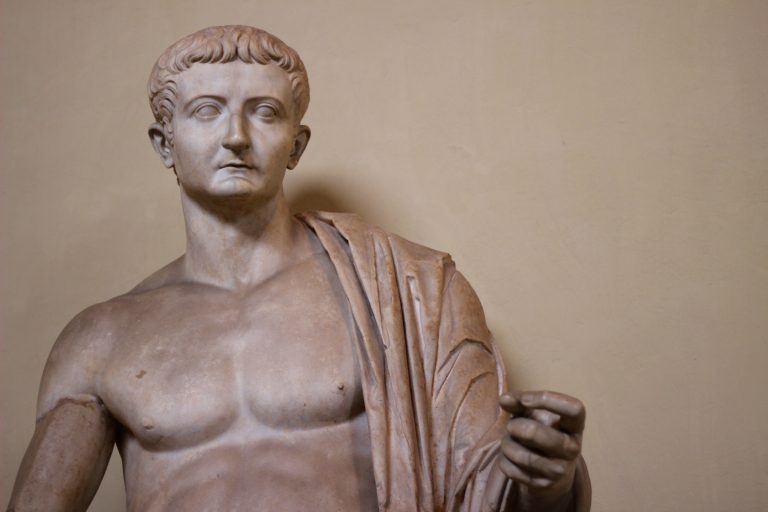Last time in our series about ancient Rome and Judea, we looked at when the Jews first made contact with the Roman Republic, forming a close alliance against a common enemy, the Seleucids, in the mid-2nd-century BC.
This alliance lasted around 100 years, until 64 BC, when Pompey Magnus invaded Judea, captured Jerusalem, and established the Roman province of Syria. But relations improved again under Julius Caesar, and his successor, Augustus. The latter not only recognised Judaism as a religion and permitted its practice throughout the empire, but for many years shared his court with Herod Agrippa, the son of Herod the Great, who arrived there aged 11.
There was one fundamental problem with incorporating the Jews into the Roman Empire though, and that was participation in the imperial cult.
From the Augustan Age onwards (31 BC – 14 AD), it became common practice to worship the living emperor as a god: a phenomenon known as the imperial cult. Building temples and making offerings towards the emperor’s divinity formed a kind of religious glue that held the many disparate peoples of the Roman Empire together.

In essence, participating in the imperial cult gave citizens from Gaul to Greece, and Syria to Spain, shared ‘Roman’ religious values where they were otherwise divided by ethnicity, language and culture.
By its very nature, however, Judaism was fundamentally incompatible with participation in the imperial cult.
For a start, Judaism permitted the worship of only the one God, leaving no room for the worship of the Roman emperor. Moreover, Judaism is aniconic, something at odds with pagan religions that worshipped statues of Roman gods or, under the imperial cult, statues of the emperor. Finally, Jewish religion was rooted in the Torah, which quite clearly outlined to what extent they could (or rather couldn’t) participate in foreign religious practices.
This understanding is vital in explaining the behaviour of the emperor Tiberius (14 – 37 AD).
For in 19 AD, the emperor decided to expel a great number of Jews from the city of Rome “unless before a certain day they repudiated their impious rites.”

Tiberius’ hostility towards the Jews stood at odds with his predecessor Augustus’ tolerant approach. Having said that, Augustus was Rome’s first emperor, and the pioneer of the imperial cult.
As the first of a dynasty, Augustus could reap the rewards of being worshipped without really having to define how his worship was to be performed. This task was left to his successor, Tiberius, who without his predecessor’s legitimacy or political nous opted for a hard-line approach.
Tiberius clearly saw the Jews’ inability to participate in the imperial cult as dangerous to the cohesion of Roman culture and society. In fact, we have evidence from Jewish authors like Josephus (Against Apion, 2.123) and Roman authors like Cassius Dio (37.17.1) that Judaism was attractive to Greeks and Romans for its mystery and exoticism.
In fact, two ancient authors, Tacitus and Suetonius, tell us about the conversion to Judaism of an eminent Roman matron around 19 AD, showing just how appealing the religion was even to elite members of Roman society.
It is in this light that we should view his decision, which his death prevented him from implementing, to expel the Jews from Rome. And it is also in this light that we should view the incredible behaviour of his successor, Caligula, which we’ll look at in our next post.

Do you want to learn more about the history of the Jews during the Roman Empire? Keep watching this space and there’ll be a new blog about it soon. And remember: when in Rome, come and join me on one of my Jewish Ancient Rome tours!






